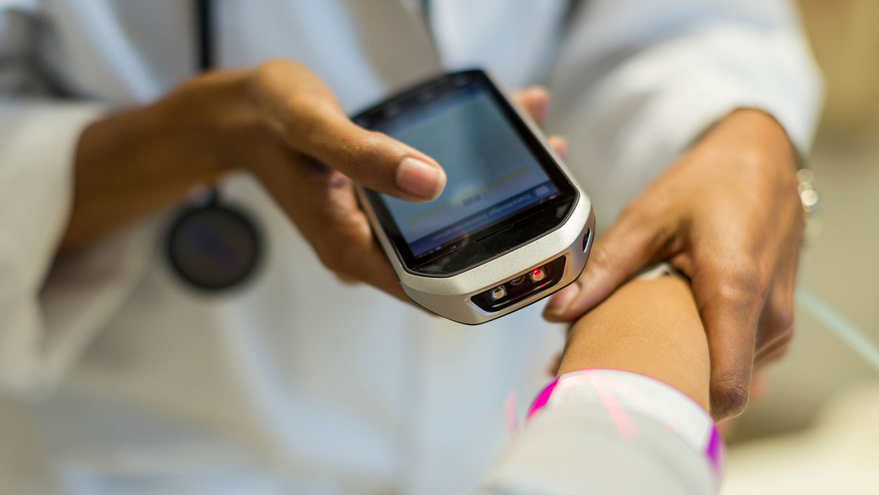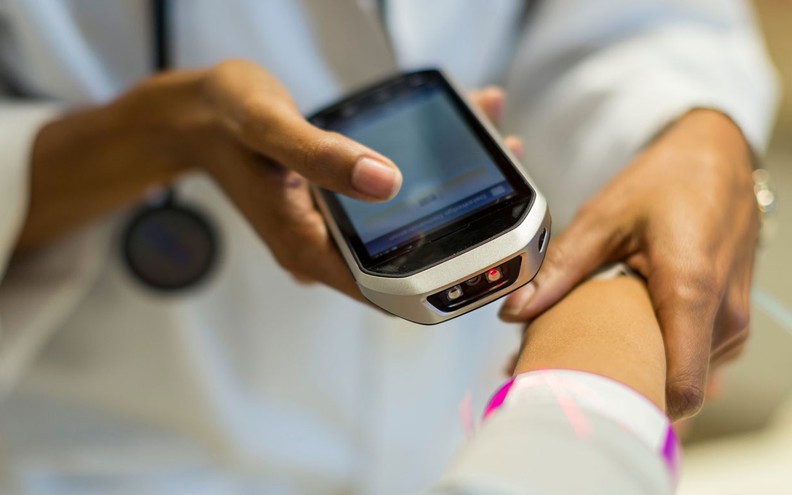
Whether it’s heart rate tracking or a reminder to take medicine, the Internet of Things (IoT) has brought a new revolution in the healthcare industry. IoT is bridging the gap between doctors, healthcare facilities and patients by allowing them to connect remotely.
Grand View Research revealed that the global IoT in the healthcare market is expected to reach $534.3 billion by 2025, expanding at a CAGR of 19.9% over the forecast period. From personal fitness tracking products to remote monitoring applications and surgical robots, IoT has the potential to bring innovation to the healthcare ecosystem.
Though technology cannot eradicate chronic diseases at once, it can at least make healthcare easier in terms of accessibility.
The application of IoT in the healthcare sector is a hope for better healthcare because it facilitates health centers to function competently and patients to get better treatment.
In this article, we shall discuss:
- How IoT helps in the Healthcare Industry?
- Healthcare IoT Security Issues and Risks
- What should be done to secure Healthcare IoT Products?
- How to develop an end-to-end Healthcare IoT Product?
How IoT helps in the Healthcare Industry
- Monitoring and Reporting
- Connected IoT devices can be used for real-time monitoring to save lives in case of a medical emergency like diabetes, asthma attacks and heart failure. With a smart medical device connected to a mobile app, connected devices can gather medical and other health data and use the smartphone data connectivity to share the collected info with physicians.
- IoT devices gather and send health data like oxygen and blood sugar levels, blood pressure, ECGs and weight. The data gets stored in the cloud and can be transferred to the authorized person who could be a doctor, insurance provider, health institute or a third-party consultant. Authorized users can view the collected data regardless of their time, device or place.
- The Center of Connected Health Policy revealed a study that states there was a 50% decline in 30-day readmission rate due to remote monitoring of heart failure patients.
- Tracking and Alerts
- Timely alerts are crucial in case of life-threatening situations. Healthcare IoT devices collect essential data and transfer that data to physicians for real-time tracking while sending alerts to people about the critical situation using mobile applications and other associated devices.
- Alerts and patients’ reports provide an opinion about a patient’s condition irrespective of time and place. It also helps make well-informed decisions and deliver on-time treatment.Therefore, IoT facilitates real-time monitoring, tracking and alerting that allows better accuracy and appropriate intervention by physicians and enhances patient care delivery results.
- Improving Research System
- Healthcare IoT products can also be used to perform clinical research. IoT facilitates collecting a massive amount of data about the patient’s illness that would have taken years if we would have collected it manually.
- The collected data can also be used for the statistical study to support medical research. IoT does not only save time, but it also saves money invested in the research. Therefore, IoT has a significant contribution to the field of research and introduces better and bigger medical treatments.
- Data Assortment and Analysis
- Healthcare IoT devices generate a vast amount of data in a short period. It becomes hard to save and manage the data if you don’t have access to the cloud.
- Also, it is quite difficult for healthcare providers to collect data from multiple sources and devices and analyze them manually.
- But, IoT devices can gather, report and analyze the data in real-time and reduce the need to store the data with edge computing.Healthcare organizations can use healthcare IoT devices to get crucial healthcare data-driven insights and analytics to speed up the decision-making process and avoid errors.
- Enhanced Disease Management
- IoT enables real-time remote monitoring of patients via healthcare devices, ensuring that no data related to the condition of a patient is missed. It facilitates the timely and quick diagnosis of the illness. Even when a nurse or doctor is not available with the patient, it is possible to monitor the condition of a patient via a healthcare IoT device and medical application.
- Since IoT healthcare devices are interconnected, they can provide immediate help whenever needed. These devices can be configured with a lower or higher limit. If any medical device registers a lower or higher limit, it automatically triggers another connected device that can stabilize the patient’s condition.At the same time, it can trigger an alert to the doctor, caretaker or nurse smartphone app so that they could provide constant medical assistance to patients.
- Monitoring of Staff, Patients and Inventory
- Hospitals across the globe have to deal with the security issue that is critical to handle. Hospital authorities need to manage a lot of things, like patients, staff, hardware and doctors.Though all this can be handled effectively in the case of small hospitals, it may seem challenging in larger hospitals that have multiple buildings along with numerous patients and staff.
- Hospitals are using IoT and real-time GPS services to enhance the monitoring process. With IoT technologies such as WSN and RFID, you cannot only track healthcare-related assets, such as blood bags, medical waste and infusion pumps, but also control the condition of assets, including humidity, orientation and temperature.
#iot #healthcare app development #healthcare software companies #iot healthcare #iot healthcare market
